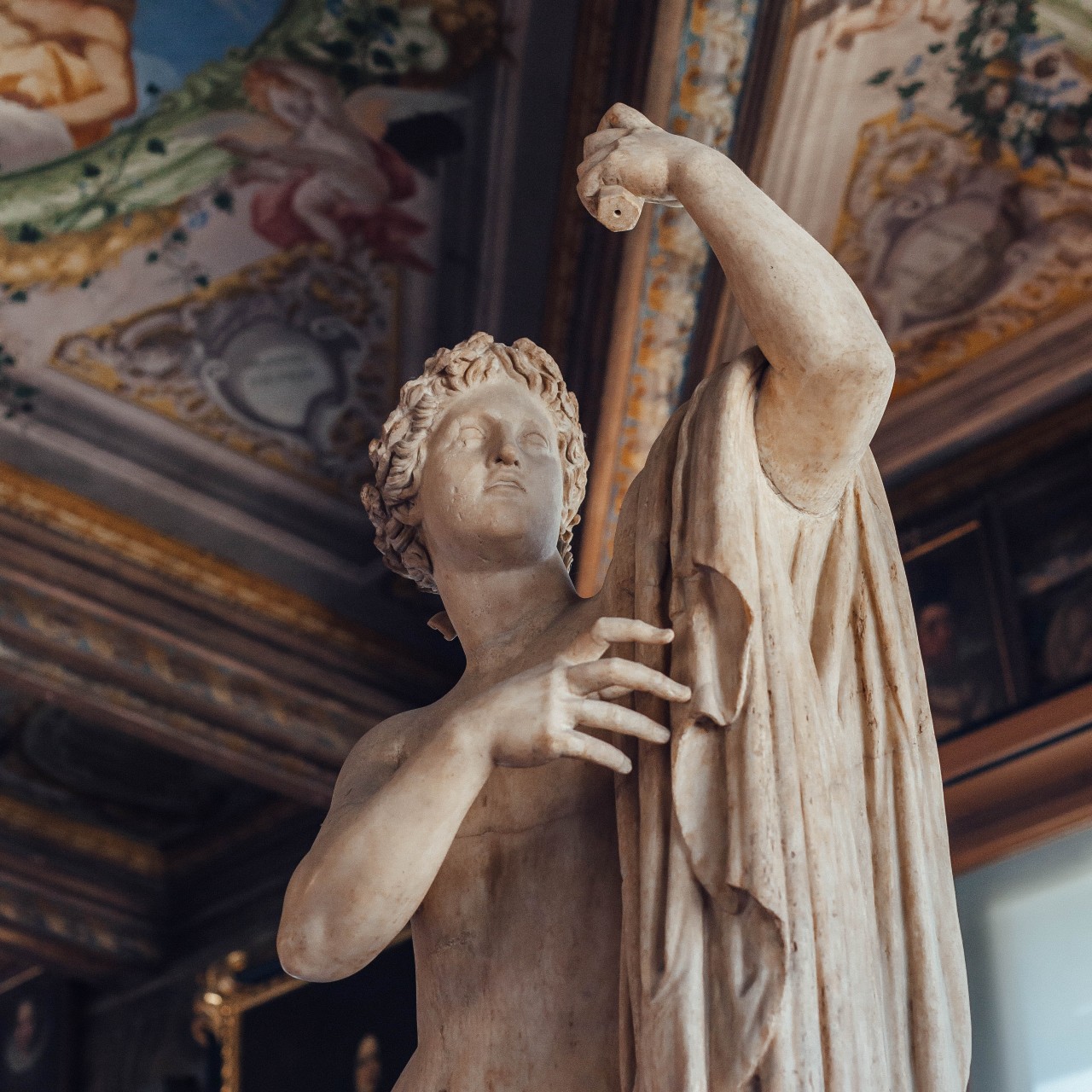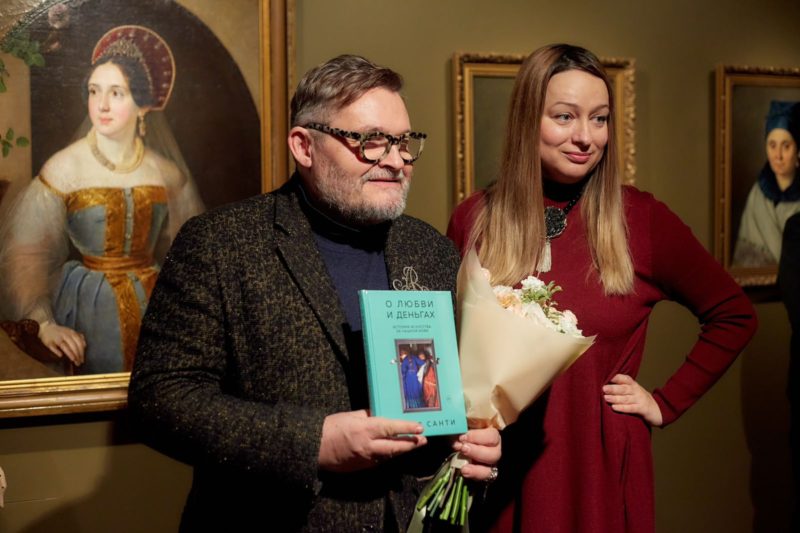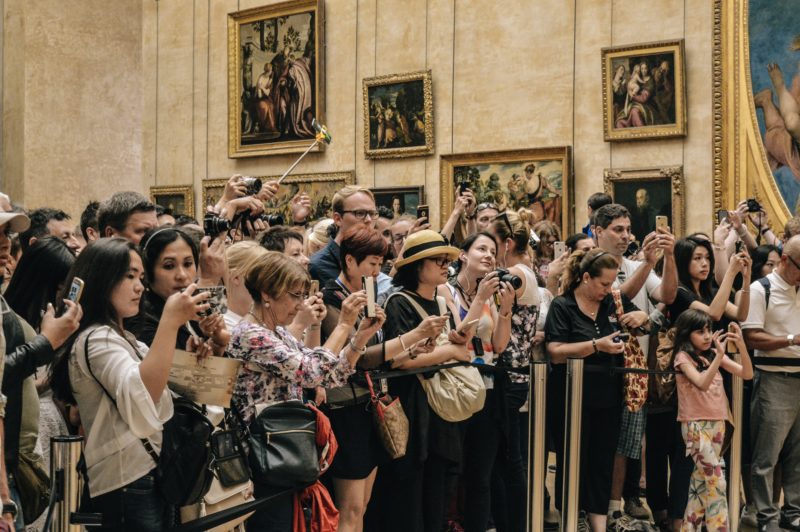
Maria Santi is an art historian, curator, and writer. With her extensive knowledge and expertise, she has taught the history of fine arts at esteemed educational institutions in Moscow, Russia. Maria frequently makes appearances on radio and television, where she hosts the popular program “Pro Art.” She has authored three books: “Simply About Art: What Museums Don’t Tell,” “On Love and Money: Art History Over Coffee,” and “The Luck of a Genius: From Servant to Prophet. How High Art Was Invented.” Fine Art Shippers sat down with Maria Santi to talk about the concepts of art history, multiple perspectives on its evolution, the popularization of art, and modern curatorial practices.
The Invention of Art History
When does the history of art, as we currently understand it, begin? Does it trace back to Georgio Vasari’s renowned work “The Lives of the Most Excellent Painters, Sculptors, and Architects,” or were there earlier endeavors to document art history?
Maria Santi: Giorgio Vasari’s writings played a crucial role in the establishment of art’s recognition and value. Before him, art was not recognized as a distinct discipline, and artists were viewed as craftsmen fulfilling various needs. Although there were renowned painters in ancient times, art lacked the comprehensive and intentional discourse it enjoys today.
While Vasari’s approach may not meet modern scholarly standards, his vivid descriptions and captivating stories about artworks garnered attention. In one instance, he even accused Andrea del Castagno of murdering his teacher, Domenico Veneziano, although Andrea died four years before Veneziano. Vasari aimed to demonstrate that artists brought everlasting glory to rulers, and this perspective resonated with those in power.
The establishment of museums during the 18th century played a significant role in the emergence of art and art history as a distinct and respected field. Rulers wanted not only to preserve their time-darkened masterpieces but also to exhibit them in specialized spaces for public admiration.
The 19th century witnessed the formation of nation states, during which the influence of the Church and religion as the unifying force diminished. Consequently, attention turned toward the unique culture and heritage of each country, which came to be regarded as defining characteristics. As a result, art gained a status that had not existed before. Governments started to allocate money to support the preservation, study, and promotion of cultural heritage. This development also gave rise to specialized professions – art historians, curators, and museum directors – to cater to the growing demand.
In your book “On Love and Money,” you chose to present art history in reverse chronological order. Why did you choose this storytelling approach? What advantages does it have?
I knew that some European art and design schools used this approach in their programs. I was curious and wanted to experiment with it while writing my book. During my work, I actually came to realize that the conventional linear narrative of art history, which progresses from ancient civilizations like Egypt, Rome, and Greece to the Middle Ages, Renaissance, Enlightenment, and beyond, did not capture the true essence of the subject. Indeed, before, artists, particularly those from the 17th and 18th centuries, had limited knowledge of art history. Instead, they found inspiration within their immediate surroundings, which served as a reference that they either imitated or challenged. This new perspective allowed me to gain new insights into art history and uncover intriguing connections that had eluded me before. In my book, I share these discoveries and my interpretations of them.
You refer to your work as the “popularization of art.” What, in your opinion, is the need for popularizing art in the first place?
Back when I was in school, museum visits were meant to instill a sense of reverence toward art. However, times have changed, and now information is more easily accessible, leading to a shift in the audience. Visiting museums and galleries has become a form of leisure for adults who, on average, are more educated due to the wealth of available information. They no longer appreciate the condescending tone employed by experts speaking in academic language, as if assuming the general public could never comprehend. Nowadays, there is a growing demand for a more approachable and engaging style that nurtures and sparks curiosity in the audience. People have various motivations for learning about art. For some, it is an escape from the mundane, while for others, it is an effort to maintain cognitive activity in older age and prevent illnesses. In my view, those who popularize art should naturally adapt to this new demand.
How should exhibitions be approached today? What are your thoughts on how museums should display their collections?
Creating an exhibition is a collaborative effort, even if viewers may not be aware of it. The curator must strike a balance between creative ideas, practical considerations, and input from designers, architects, and other professionals involved. One challenge is trying to please every possible audience, which is not feasible. While museums should adapt to the modern world, they also need to maintain their unique identity: People visit museums to escape the ordinary and experience something special, and that timeless atmosphere should be preserved.
When designing an exhibition, it’s important to avoid making it overly interactive with excessive entertaining elements that distract from the artwork itself. People can sense when something becomes overwhelming. Conversely, if the exhibition space is too plain and devoid of additional design elements, it may lack vitality. In my opinion, a sensible approach would be to incorporate a small percentage, perhaps around five percent, of contemporary design and tech elements. The main focus should always be on showcasing the beauty and essence of art.


